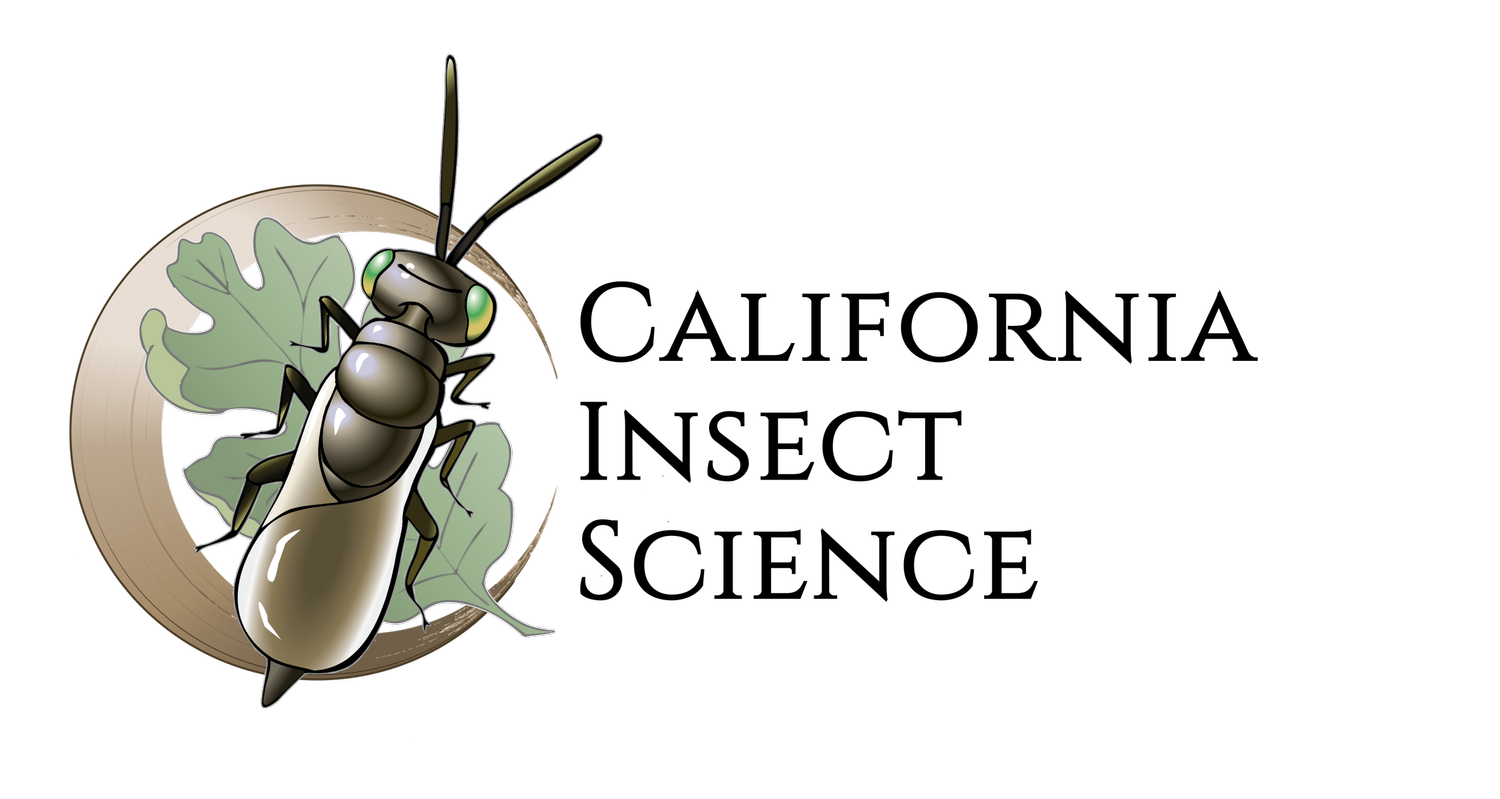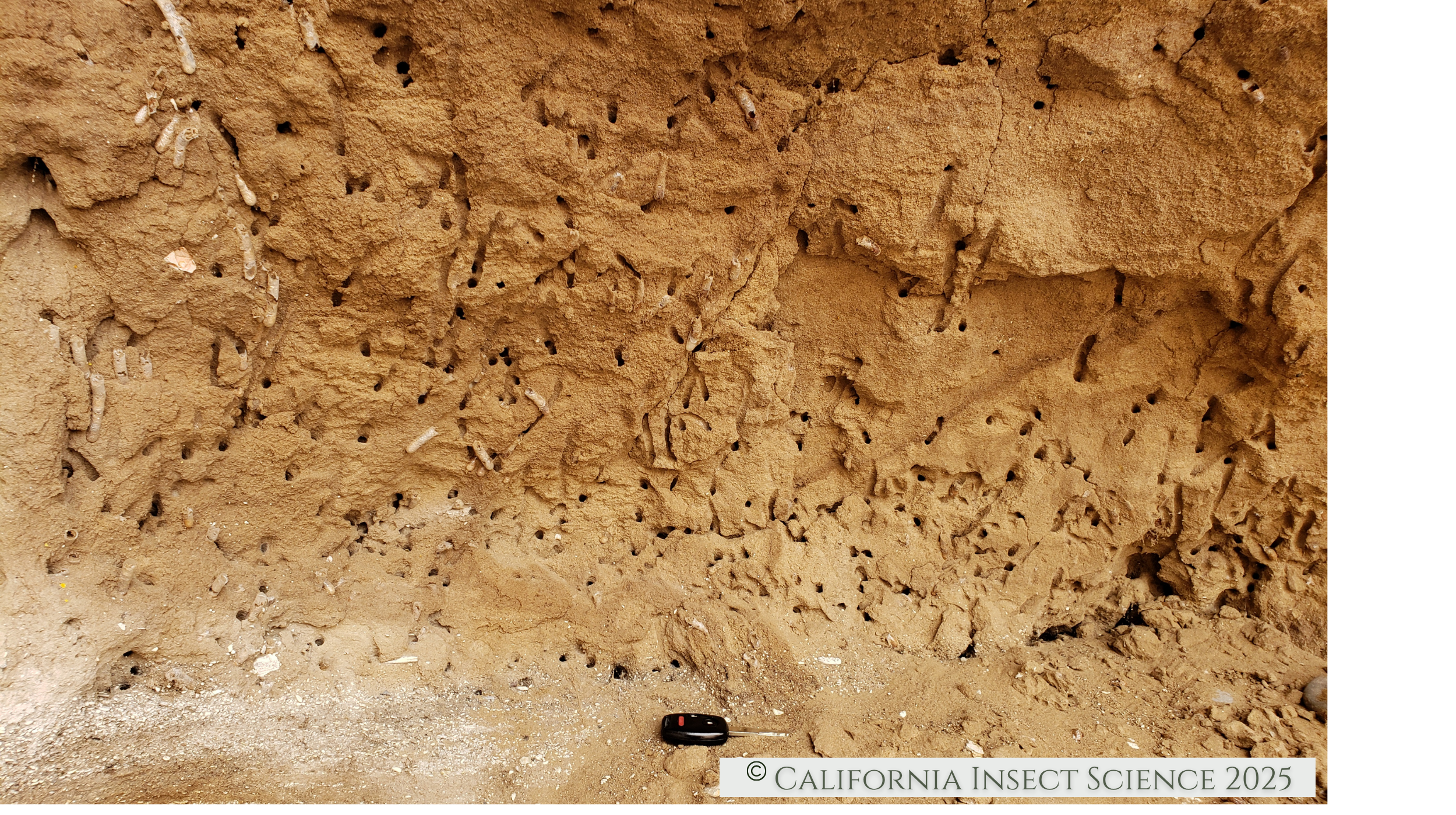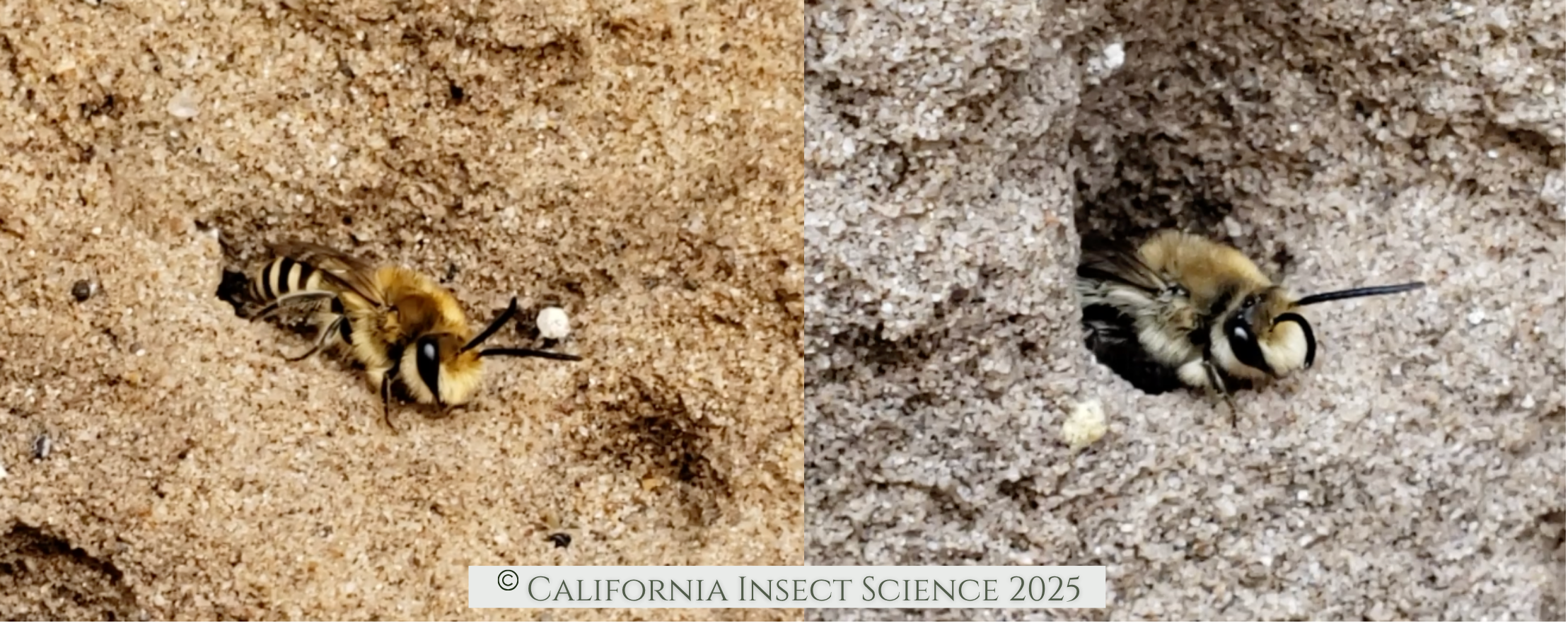Pollinators
I was recently contacted by the McClatchy News Service to answer some questions about carpenter bees (published June 11, 2025, SLO Tribune). To prepare, I reviewed the basics on carpenter bees and was struck by a conundrum that I’ve encountered before in teaching growers and students about certain animals that end up impacting our managed spaces.
How Can an Animal Be Considered a Pest and a Beneficial?
Carpenter bees can damage wood - such as that used to build fences, structures, or siding. They chew large tunnels for their nests that can be ¾ inch wide and a foot or more deep. This compromises the integrity of the wood, which may then need to be replaced. These bees are also big and noisy, so they frighten people. For these reasons, humans have dubbed them pests.
But carpenter bees evolved long before people and we’ve encroached into their space with our wooden structures. Therefore, their response is perfectly reasonable. They are simply doing what they’ve always done, build nests by chewing tunnels into wood.
Carpenter bee video is shared with permission of the owner, @gigisgardentips.
Is there an upside to an organism that tunnels into dead wood? Yes. In fact, there are a couple. The first benefit is that tunneling by such a large insect helps to break down large chunks of wood from dead and fallen trees allowing smaller organisms, even microscopic ones, to further break down the plant biomass to return its nutrients back to the soil. In other words, helping in a big way with nutrient cycling. This behavior makes carpenter bees similar to termites; just a larger, stronger version.
But perhaps more importantly, carpenter bees fill their tunnels with pollen as a food source for their developing young. They are among the cadre of insect pollinators whose numbers are legion. Pollination is an ecological necessity.
Pollinators in Peril?
There is a lot of attention given to pollinators in the press, on social media, and environmental and academic websites. There are now many trained and well-educated citizen scientists focused on native pollinators and improving their habitats. There are also many well-meaning casual observers, whose newsfeeds may not go beyond the calls for protecting the honey bees. And an absence of information can lead to actions that may in fact be counterproductive.
Do pollinators need saving? In a word, yes. The research community has solid evidence that insect pollinators are in serious decline. One problem with reading and interpreting these findings is that many people assume that a pollinator, or even the term bee in general, refers to just one insect – the western honey bee, which unfortunately causes confusion when it comes to efforts aimed at “saving the pollinators” or “saving the bees”.
The western honey bee has become the poster insect for pollination. It is often viewed as wholly beneficial with no downsides, even getting a pass for being a stinging insect. But the western honey bee does have some ecological downsides. This species originated in Europe and poses significant environmental impacts that harm native bee populations. California has 1600 species that are crucial pollinators of our native plants.
Read more about the arrival of the western honey bee with the Jamestown colonists and the concept of ecological imperialism.
Are Honey Bees a Pest?
Does this mean that the western honey bee poses a conundrum like the carpenter bee – a beneficial and a pest? Public perception typically does not agree, as the honey bee is only viewed as beneficial. The differences we perceive between these two species is that the western honey bee’s negative impacts are not directly aimed at us or our resources. Honey bees only negatively impact native bee species, most of which are lesser known and rarely encountered. Therefore, the honey bee’s downside is less obvious to us, and we don’t get too riled up about their negative effects on other species.
But maybe we should. We need to keep western honey bees from harming native bee species, just as much as we need to keep western honey bee populations healthy and thriving. We depend on western honey bees for pollinating our crops. At least one-third of our food production depends on western honey bee pollination. Without them, our crop production would plummet or be non-existent and our global food systems would collapse. Did you know that the majority of beekeepers use their hives for pollination services, not honey production? There are currently an estimated 2.6 million bee hives in the U.S. And in a remarkable, annual, manmade migration, 2.3 million of those hives are loaded onto trucks and moved each spring from all parts of the US into the almond orchards of California’s San Joaquin Valley. It is the most extensive movement of the largest number of insects in the world. Enjoy your almond milk!
What is a Native Bee?
Less recognizable are the vitally important efforts of native, solitary bee species that pollinate native plant species. Without native bee pollinators, our native ecosystems would collapse. They are as important to our natural areas as honey bees are to our crops. While out on a hike along the central coast of California, I came upon one such species. A really interesting bee - the unequal cellophane bee, Colletes inaequalis. This species belongs to a group of bees also referred to as polyester bees or plasterer bees.
Cellophane bee habitat, the bare soil of the trail. A female unequal cellophane bee digging a tunnel.
Cellophane bees dig tunnels into areas of bare soil and create a tunnel for each offspring. She lines the tunnel with a waxy-like material secreted from glands in her abdomen. The material resembles plastic and it makes the tunnel waterproof, keeping moisture away from her developing offspring and its food supply.
Cellophane bees, like most other native bee species (except for bumble bees), are a solitary species, which means that females dig and provision nests for individual offspring. However, several females will build nests in proximity to each other creating what are referred to as bee neighborhoods.
A cellophane bee neighborhood at Jalama Beach, Santa Barbara County. Car key for scale.
In the image above, erosion has exposed this neighborhood’s numerous tunnels dug by bees over the years. You can see some of the tunnels are still lined with white tubing, the plastic-like water-proofing material exuded by the bees.
And sometimes in these neighborhoods, one opening will be used by several females that lead to multiple nests like the front door to an apartment building.
Females moving in and out of openings used by several bees to reach their own tunnels.
What Can We Do To Help Ground Nesting Bees Like Cellophane Bees?
Cellophane bees have very specific requirements for where they dig their nests. They prefer sparsely vegetated, sandy, uncompacted soils. They will not nest where soils are covered in plant mulches like bark or wood chips. Therefore, maintaining areas of bare soil in your landscapes is key to providing the appropriate habitat for these bees. This practice is contradictory to what we’ve heard in recent years regarding the negative effects of bare soil - erosion, water loss, soil temperature fluctuations, and nutrient depletions. But a larger issue that has received a lot of research attention is that bare soil has less organic matter inputs and greater carbon loss. Are we getting conflicting information about whether to mulch or not? Which is more important - saving ground nesting bees or sequestering carbon? I think it’s a matter of scale. In my opinion, you can do both. Leaving an area of bare soil in an otherwise well-maintained, vegetated yard will not result in negative impacts affecting the surrounding areas and you’ll leave space for native bees to do their thing. It can be a win-win with a little ecological know-how.
Unequal cellophane bees are just one type of native bee. There are many more such bee species around, all of which deserve to be noticed, learned about, and cared for. There are bumble bees, but also the lesser known leaf cutter bees, mason bees, squash bees, sweat bees, digger bees and cuckoo bees. I encourage you to look them up and learn more about them by checking out the resources and sources listed below.
What Can We Do To Help Other Pollinators?
If we really want to help pollinators of all kinds, let’s rethink what helping pollinators truly means so we can take actions that are actually beneficial. Each species has particular habitat requirements, as I described for the cellophane bee. If we take the time to understand their biology, we’ll understand their habitat needs, then we can work toward better coexistence.
To find out more about helping native bees, please check out the Resources for Pollinator Information section below.
A Note About Non-Native Species
Many non-native species arrive, establish and are considered ecologically benign (from a human perspective). About 20% become harmful and a few are beneficial. Learning from the past is what helps us develop ways to respond to new arrivals. We are relieved when they are benign. We are happy when they are beneficial. And we figure out ways to manage their impacts if they are harmful. And when an organism is harmful to agriculture, the management strategy is biological control, which will be the topic of an upcoming blog.
Resources for Pollinator Information
An excellent and extensive publication on how to help native bees on farmland comes from the National Center for Appropriate Technology (NCAT) Appropriate Technology Transfer for Rural Areas (ATTRA).



